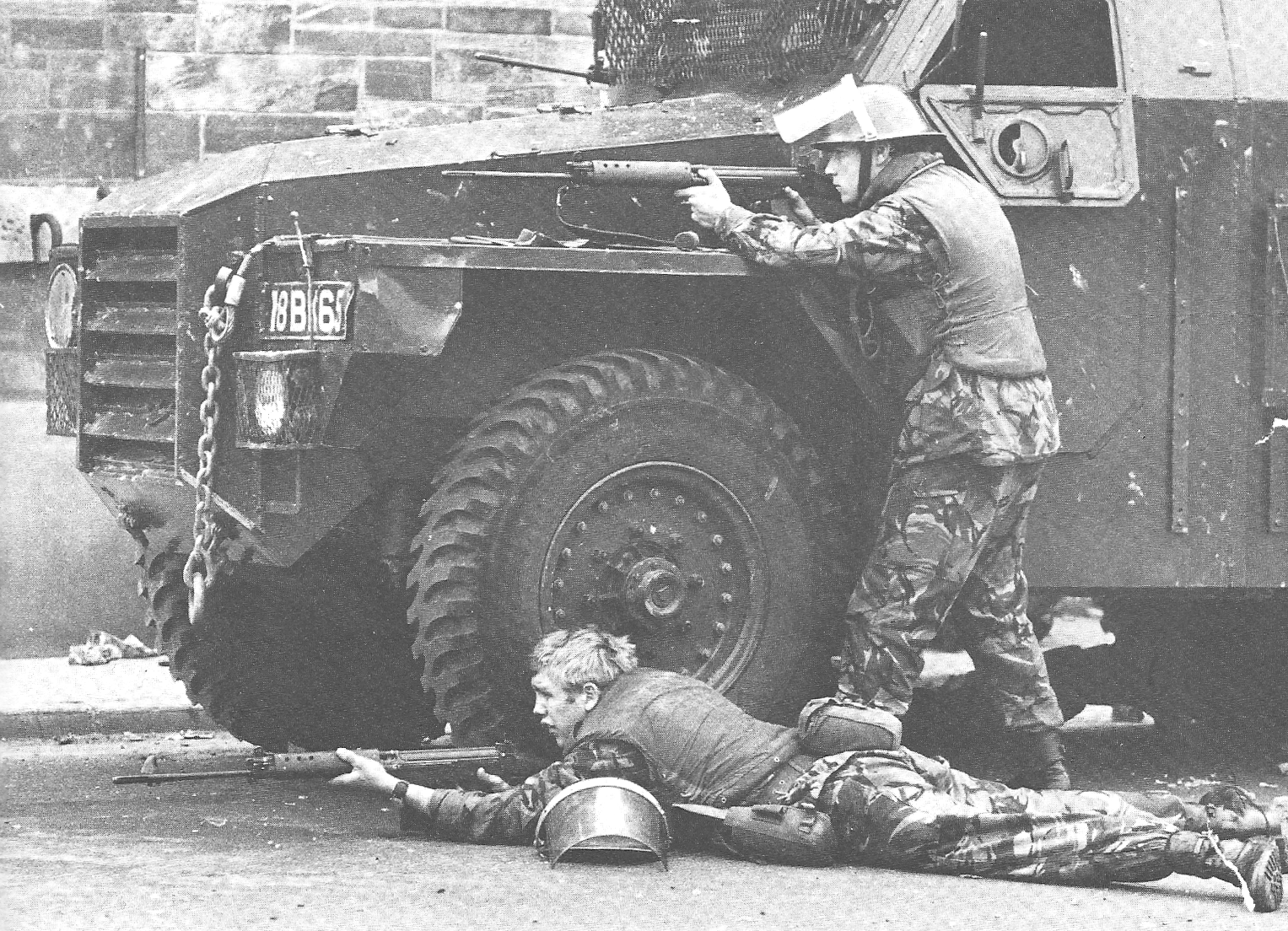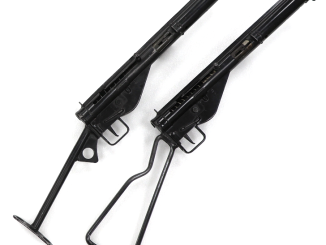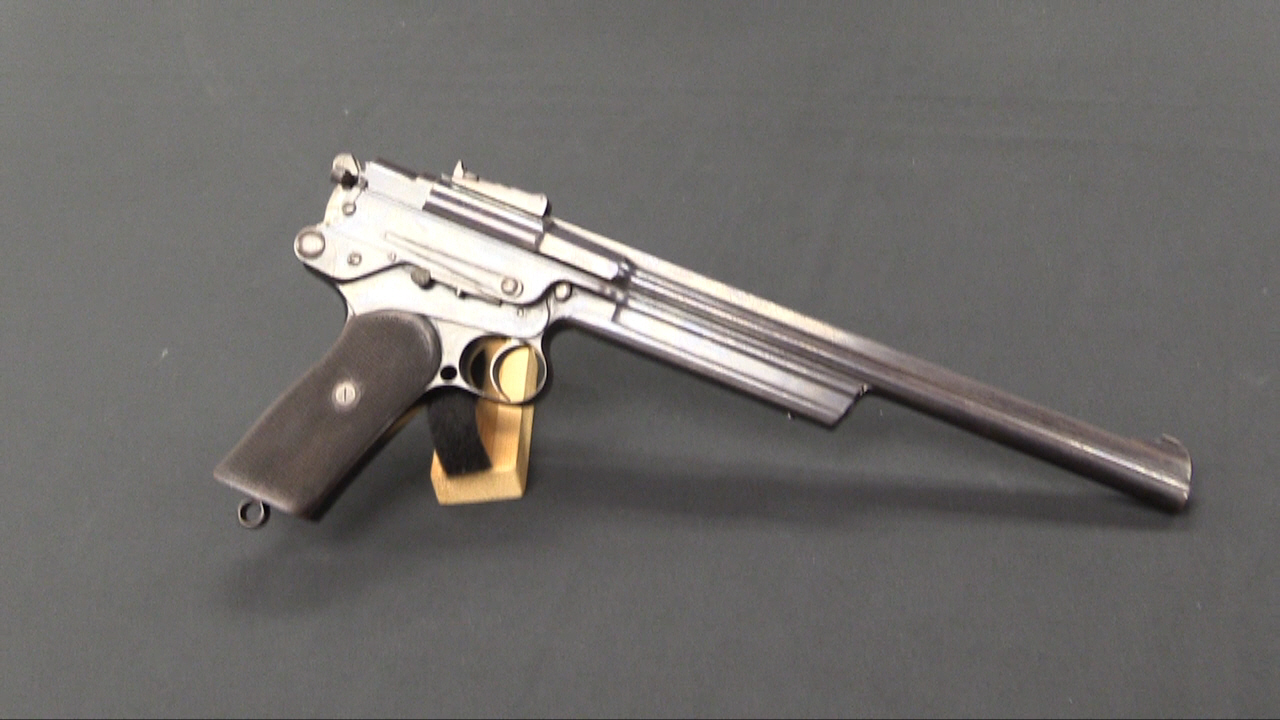Armament Research Services (ARES) is a specialist technical intelligence consultancy, offering expertise and analysis to a range of government and non-government entities in the arms and munitions field. For detailed photos of the guns in this video, don’t miss the ARES companion blog post!
The SA80 saga continues today with the final pre-production versions of the L85A1 and L86A1, although at this point they still both carry XL designations, as they were not yet formally adopted weapons. In these weapons we can see a couple last distinctive mechanical changes, but perhaps more importantly by this time the worker morale at RSAF Enfield was thoroughly in the tank. It had become well known that the factory complex was going to be taken public or sold outright, and it was widely expected that Enfield would be shut down as a result. A new facility would be built in Nottingham, but none of the rank and file staff expected to transfer. They would be laid off, and they knew it. Not surprisingly, quality control suffered as a result.
As for the guns themselves, the first distinctive visible improvement was in the magazine well. In the XL70 weapons, the bottom half of the magazine well had been simple welded onto the bottom of the lower receiver, in order to retain the easy stamping of that element. On these guns, that have been replaced by a separate box which encompassed the magazine and was spot welded into the lower receiver. This change in construction method allow the magazine well to be much more precisely located in the receiver, and then fixed in place without the risk of warping the thin sheet metal of the lower receiver – while still retaining the simple stamping of that lower.
The other visible change was to the Light Support Weapon, and it consisted of a long “girder” support added below the barrel. This was intended to mount the bipod onto, in the hopes of resolving the long-running problem of split groups in the LSW. This was a problem in which the first round of a burst would hit substantially low and left relative to the rest of the burst. While the LSW was a quite accurate weapon in semiautomatic mode, this split group problem was a substantial detriment to its effectiveness as a proper support weapon.




I would be ashamed to manufacture this product if my job was already done to death. And why would I do a good job if unemployment was 100% guaranteed?
I suspect that the welded on magazine extension of the previous version was intended as a temporary fix until a new die could be made for what we see in the version in this video. The solution adopted here is the most obvious way of doing it, and the previous one looks like such a fiddly and expensive way of doing things that it’s pretty hard to imagine that anything else than what we saw here would be used as a final solution.
To add a couple of other points, many users of the LSW (L86) have said that they were instructed to not use it in full auto mode as an LMG, but rather more as a form of marksman rifle. Since it didn’t have a quick change barrel (like the Bren), it wasn’t really practical to use it as an LMG. Full auto was only for when you were in deep trouble and throwing everything and the kitchen sink at the enemy. In repetition mode however, the longer barrel allowed it to out range the L85 in terms of putting rounds on target. However, eventually changing needs and tactical ideas made a GPMG a more generally useful thing to have even if it was more weight to tote around.
Another point is that the initial training and supply of cleaning kits on roll out was poorly handled, and problems relating to that got blamed on the rifle.
Overwhelmingly however, the troops who actually used it in combat in Afghanistan seem to say that they are very impressed with the accuracy and reliability of it. If they have any complaints today it’s usually about the weight.
Most of the complaints that I hear about it today seem to come either from people who’ve never used it, or people who only used it briefly before retiring from the army. You have to take complaints from the British with a large grain of salt, as they are world class pessimists who insist that Britain has gone to the dogs, everything new which originates in Britain today is somehow never as good as that which existed in the past, the youth of today never etc., etc. Just don’t make the mistake of agreeing with them when they get in that mood however.
“Overwhelmingly however, the troops who actually used it in combat in Afghanistan seem to say that they are very impressed with the accuracy and reliability of it. If they have any complaints today it’s usually about the weight”. This occurred primarily after Heckler & Koch had refurbished the rifles and added product improvements to make the L85A1 and L86A1 more reliable.
To add to alleged praises on performance of SA80/85 in Iraq, I read something quite different. British troops were outgunned (namely during first thrust and follow up in area of Basra) and their reliance on rifles was dismal. As matter of fact, in some instances they were in dire straights and sheer luck helped them to make a day.
On account of quality of later British industrial production – it is not that bad. Actually, in some cases Brits excel, such is the case of Triumph motorcycles. I did consider at one point to purchase one myself and I am pretty discriminate in that area. So, they can produce good quality stuff for reasonable price.
I don’t know any of the inside info at Triumph
When Toyota were setting up a plant near Derby, they specifically recruited people who had never worked in the British car industry.
They wanted to train people to make cars Toyota’s way, rather than in the way that cars had been made in British Leyland days.
There are numerous parallels between the SA80 project and several of the British car projects, for example the triumph Stag (BL made a very good licensed copy of the small, aluminium block Buick V8 – but because of internal politics within BL, “Rover” either wouldn’t supply the V8 to”Triumph” or Triumph wouldn’t ask for it, Triumph developed it’s own V8 which repeatedly warped it’s cylinder heads…)
Or the “Austin” Allegro, with the square steering wheel. Arguably one of the worst cars ever made. The body was shaped for a hatch back, but it couldn’t have one, because hatchback was the selling point of another BL car, the “maxi”
This was half a century on from the “socialist calculation debates” in economics, and illustrated the “Austrian” position perfectly, that rational economic calculation is not possible under socialism.
To some degree (and you know better) the distant whiff of socialism in UK may still live on. But, you have gone thru refreshing Thatcher revolution, so there is little use to recall old ‘bad’ days.
Brits were historically inclined to do quirky things and this is what graces then, makes then unusual and interesting people. Without them, world would be boring. I just hope that they will pick themselves up and finally produce worthy rifle on their onw soil. Actually, Accuracy International were a remarkable case of success in firearms.
In country of my origin there were early in 60s available cars such as Ford Anglia and Hillman Minx. They became fairly popular, perhaps due to general hunger for this king of hardware. But later came quite good and reliable Cortinas in 1.3 and 1.6 guise. A sample of the latter one was owned by former member of my extended family and he loved it.
“world would be boring”
Agree see for example Adrian Carton de Wiart:
http://badassoftheweek.com/index.cgi?id=30045813384
(born in Belgium, but served in British forces)
to summary shortly his life, read one quote from him:
Governments may think and say as they like, but force cannot be eliminated, and it is the only real and unanswerable power. We are told that the pen is mightier than the sword, but I know which of these weapons I would choose.
That’s nonsense, British pessimists are nothing like they were in my day- pessimism has gone to the dogs in the UK!
I’ve used both the SA80 and the LSW extensively (many years ago before it was extensively refurbished by H&K) and it wasn’t great (we envied the operators using M16/H&K etc.), but I understand the current version is actually pretty good. I particularly liked the LSW, though it seems to have been phased out in operations in favour of the Minimi.
I had many years ago short encounter with civilian version of SA80. As I maintained some enthusiasm from previous time, I was keenly interested to examine it closer. In short however, it was no very uplifting experience. I name 2 points of contention.
First one comes from very fact that, just like in AR18, two guide-rods are on top of carrier are used. This prevents more favorable receiver profile to fit shooter’s face. I would in this connection point out that some other rifles, such as G36 use only single guide rod, which subs as operating rod. If Enfield adopted something along that line, the face to housing interface would be markedly more suitable. We all know haw well is shaped AUG in that area.
Second point is observation of precautionary measures within action or better say, lack of them. That extents to such features as are necessary reliefs on crucial parts to allow for dirt being safely directed from important contact areas. In particular, I noticed that bolt’s shank was completely void of any such feature. To compare with, vz58 rifle, whose linear striker had incorporated such features – in form of dirt reliefs, something I was used to take for granted.
Does anyone have a link or source available for the LANDSET report that detailed the problems they had with this firearms family in Operation Desert Storm?
Thanks!
From scraps of information I recall one and that is the SA80/85 rifles routinely jammed under influence of fine sand, that simple. To correct it troops were issued rifle pouches to carry them until the point they were ready for action. I remain bit curious as what was done ne with those pouches during and after battle was over.
Again, we can talk about dirt relief, but I do want to get boring with the subject.
The spot welds on the receiver are actually TIG welds as the body pressing flexes so much spot welds did not last.
A small number of Enfield workers did transfer to Nottingham.
The sale of Enfield was promoted by the expansion of the London suburbs and increase in land values as well as all the ranges shot south, ie, towards
new housing.